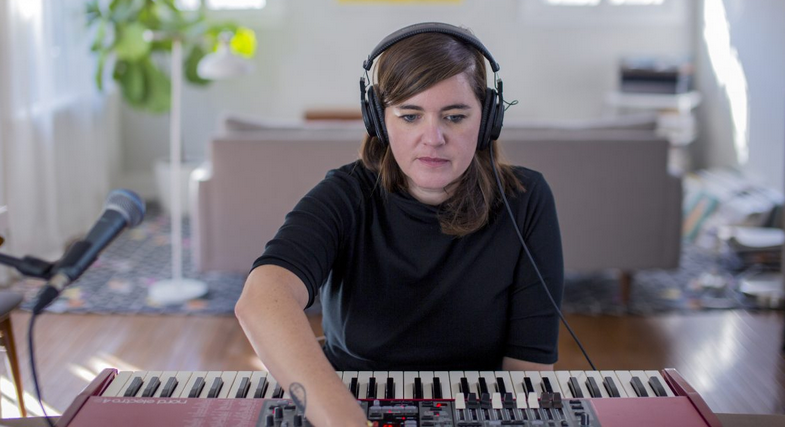Readers’ Choice
Part Six

Popular Spanish musician C. Tangana
CONTRIBUTORSWinnipeg’s Doug Smith and Barcelona’s Jeffrey Swartz offer a couple of musical gems in today’s post.
Smith presents a video of a compelling rendition of the late jazz player Billy Strayhorn‘s final composition.
Swartz offers a brief and erudite overview of Spanish popular music through the lens of a 15-minute Tiny Desk Concert featuring popular Spanish star C. Tangana. The video features Tangana and more than two dozen family members, prominent fellow musicians and a string octet in a lively and casual sobremesa setting.
The 5th Annual Readers’ Choice
Kurated readers share their favourite music of the last year in the annual Readers’ Choice series. Anything musical is welcomed whether its new, an old favourite, something self-composed and more. Thanks to all the contributors!

15 January 2022
Doug Smith
Winnipeg, MB

The late Billy Strayhorn’s last song, Blood Count, features in a short live video recording you can hear and see here. (William P. Gottlieb photo)
One song: Blood Count
Last songs, best songs. Nothing more ominous than Billy Strayhorn’s Blood Count. Nothing more beautiful than the conversation that Charles Lloyd, Bill Frisell, and Thomas Morgan share over this dark farewell.
About Doug: As hard as some people may find this to believe, Doug Smith is a treasurer.
(ED. NOTE:) The Wikipedia entry on the song includes this: “Blood Count is a 1967 jazz composition by Billy Strayhorn. It was originally meant for a three-piece work Strayhorn was writing for Duke Ellington and initially titled Blue Cloud. However, Strayhorn was hospitalized in 1967 due to cancer and finished the composition while in the hospital. He died on 31 May and Blood Count was his last finished composition. The Ellington orchestra debuted Blood Count at a Carnegie Hall concert in March, this was later released as The Greatest Jazz Concert in the World.”
Jeffrey Swartz
Barcelona, Spain

Spanish star C. Tangana hosts a sobremesa in Madrid for NPR’s Tiny Desk Concerts at Home series last spring. He surrounds himself with family and prominent Spanish musicians in this well-produced 15-minute show.
C. Tangana’s Tiny Desk Concert
One of the most alluring formats for live performance, the NPR Tiny Desk Concerts, continued during the pandemic with musicians recording from “home”. Many reflected the solitary toil of
confinement; others, like the one in April, 2021 by Spain’s C. Tangana, ignored social distance and
crowded musicians and singers into an icon of Madrid brutalist architecture, Casa Carvajal, from
1965.
A rapper and composer with roots in flamenco and forays into trap and reggaeton, C. Tangana
(“tangana” means “brawl”) used the Tiny Desk to present themes from his new album El Madrileño,
including the catchy Me Maten (They Kill Me), Los Tontos (The Fools), Demasiados Mujeres
(Too Many Women) and the dirge-like techno ballad Tu Me Dejaste de Querer (You Stopped Loving
Me).
The event is set up as a classic Spanish “sobremesa”—after a late lunch, folks hang around and sing. His mother and aunt join the chorus, while leads are taken by flamenco legends Kiko Veneno, Niño de Elche and La Húngara, as well as Romani pop musician Antonio Carmona, known for the flamenco pop salsa band Ketama. C. Tangana’s lyrics can be wry or even self-deprecating; he often comes across as exasperated. I find them funny.
In a stunning moment of the concert’s single take, the camera shot swivels from the table to an
adjacent room where a string octet awaits with a resonant arrangement to accompany Demasiados
Mujeres, where C. Tangana’s limited nasal voice does it all alone.
In a recent Rolling Stone list of best conceptual albums of all time, many Spaniards were surprised to see Rosalía’s 2018 El Mal Querer rated number 10. Conceptually, this is what Spanish music with flamenco influences has been doing for over half a century. It seemed the American music press, which resisted anything in any other language for decades, were admitting they had no clue where flamenco has been coming from, with fusions, cultural borrowings and creative melanges its habitual fare.
Already in the 1960s, Barcelona’s Romani community had adopted Afro-Cuban traditions to create
the Catalan rumba; in the same period Paco de Lucía and others were exploring flamenco jazz; by
the 1980s, what is now known as New Flamenco emerged with the duo Lole y Manuel, often singing
in Arabic.
Nowadays, musicians like C. Tangana and Rosalía continue the exploratory spirit, with
spectacular results. The success of this Tiny Desk, poised between tradition and innovation, means
it’s never too late to find a path to some iteration of flamenco. As long as we remember that C.
Tangana’s respectful homage to the genre here runs counter to his more usual practice of leaving it
far behind.
About Jeffrey: Born in Vancouver, Jeff Swartz is an art and design critic and educator based in Barcelona.





